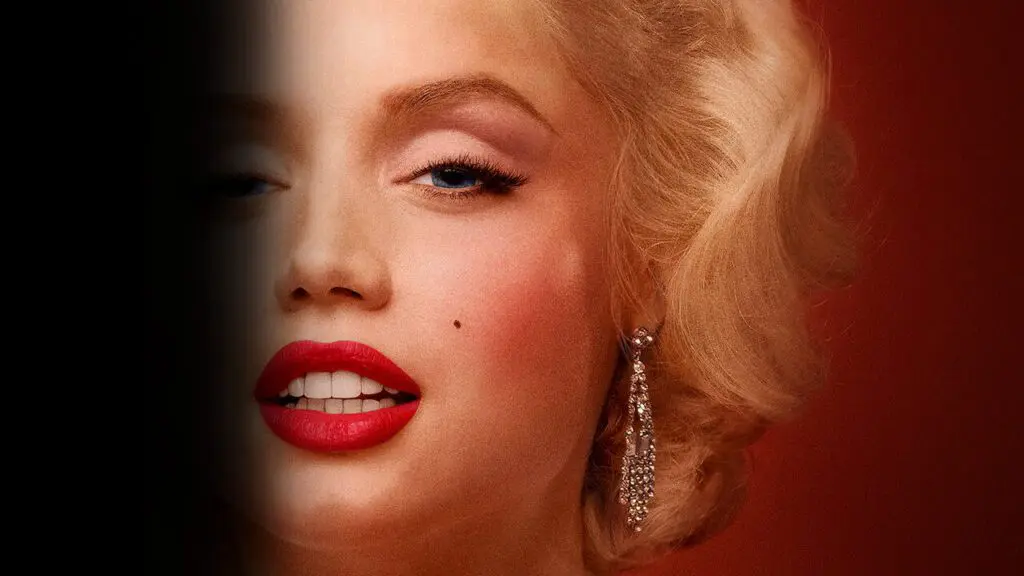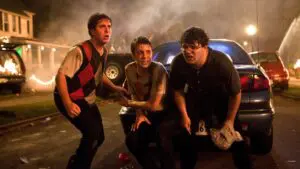Andrew Dominick’s film Blonde is a polarizing experience. Many were expecting a sexy romp. And if you were in the critics screening I was in, many laughed at the various situations our dear Norma Jean found herself in. Frankly, I found it deplorable. This is not a film celebrating the star but a dramatization of what men do to women. The sexualization of Hollywood started with the casting couch. So, Blonde is best explained through the lens of different traumas and the experiences she had growing up that led to her stardom.
Now, I never read the great Joyce Carol Oates fictionalized account of Marlyn Monroe’s life. So, the experiences with famous stars should not be taken as a biography. However, Dominick has always been very faithful to the source material.
Only a small child at the time, Norma’s relationship with her mother, Gladys (Julianne Nicholson), was tragic. The single mother was suffering a break caused by depression. She often referred to Norma’s father. How? By pointing to a picture above her child’s bed and would never tell her the man’s name, only he was a powerful man in Hollywood and lived in the hills, currently going up in flames.
Gladys tried to drive Norma Jean up there during the fire, was turned away, and attempted to drown her daughter in the bathtub. Her mother went away to a psychiatric hospital, and the adorable child grew up in an orphanage. The trauma of abandonment can have a strong psychological effect on a child. The loss of her mother only added to Monroe’s abandonment issues with her father, a theme throughout the film.
Norma’s relationship with her agent and studio head was her transformation into Marilyn Monroe. The film shows scenes of the agent (Dan Butler) inappropriately touching her leg during a screening. And after visiting her mother, she has an auction for a studio head, and she plans to find her father. There, she is raped by the head of the studio, suffering sexual trauma from this assault. I had a chilling thought from this, read the last paragraph below.
Marylin’s relationship with Charlie Jr. and Sydney Chaplin is depicted in the film as a “throuple.” This relationship was a sexual rebirth for Monroe, who was taken advantage of by the manager/agent and studio head. She became pregnant with Charlie’s child, but the film alludes to her having an abortion for the sake of her career.
Marylin’s relationship with Joe Dimaggio (Bobby Cannavale) is messy. Her abandonment issues with her father are prevalent during this period. She is sent letters from someone claiming to be her father, but this could be a fan with knowledge of her background. This thought is on her mind, and when she is told that a remarkable man wants to see her in a hotel room, she assumes it must be “daddy.” She arrives, and her boyfriend Joe Dimaggio is waiting for her and proposing. Later, Chaplin Jr blackmails Dimaggio with lurid private pictures of her together. Joe D then beats her.
Marylin’s relationship with Arthur Miller (Adrien Brody) leads to her making changes, as she wants a family but is acting distant. Norma Jean may feel inadequate in a relationship where someone treats her respectfully. Unfortunately, she suffers a miscarriage, and her marriage falls apart because the trauma of this event can lead to anxiety, depression, and PTSD. This leads to her relationship with John F. Kennedy (Casper Phillipson), who uses her as a form of coping skill for his sexual pleasure. By this time, Monroe most likely is suffering from co-occurring disorders, which are a combination of mental health disorders and substance use disorders (SUDs). This would be accurate if she suffers from what we described above and uses alcohol and pills. The film then alludes to her being given an abortion against her will because she may be carrying the leader of the free world’s child.
The film ends with Norma Jean receiving a package. It is the same stuffed animal she had as a child. In the movie, she found one exactly like it with the Chaplin brothers; that was the last time we saw it. She says, teary-eyed, “But you wanted the baby dead too.” Monroe then pulls out a card. Norma Jean opens it up, and it is blank. The words are filled in for her: “There never was a tearful father, Cass.” The last scenes show our Blonde trying to dial someone, but it looks like she is about to pass out as she looks through the white skylight. The final shot shows the father figure barely cutting through the fog.
The ending connects Monroe’s abandonment issues, knowing her father and mother didn’t want her, and how she and her lover, Cass, did not as well. We can assume that looking into the white light signifies she is dying from substance abuse. The last scene of that father figure does not represent some grand reunion with her father, but how the issue was a grey cloud that overshadowed her life until her death.
Side note: I also pondered a theory. The picture and image in Norma Jean’s head of her father look like a younger version of the studio head executive she was assaulted by. This is the same studio where her mother refers to when saying this is where he worked. Monroe tells her mother she has an audition before the assault, and she will investigate the matter there. The film nods to her “daddy” when she asks the same executive at a premiere, and he tries to quiet her down when she asks him if her father will be there. So, this begs the question:
Was the studio head that sexually assaulted Monroe her father?




